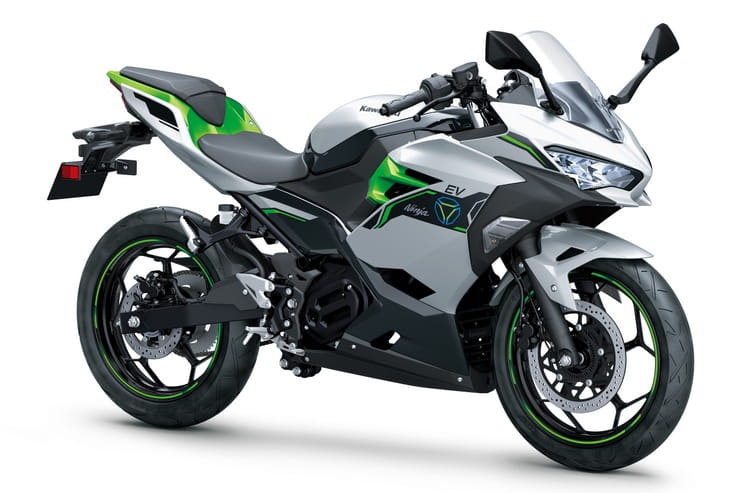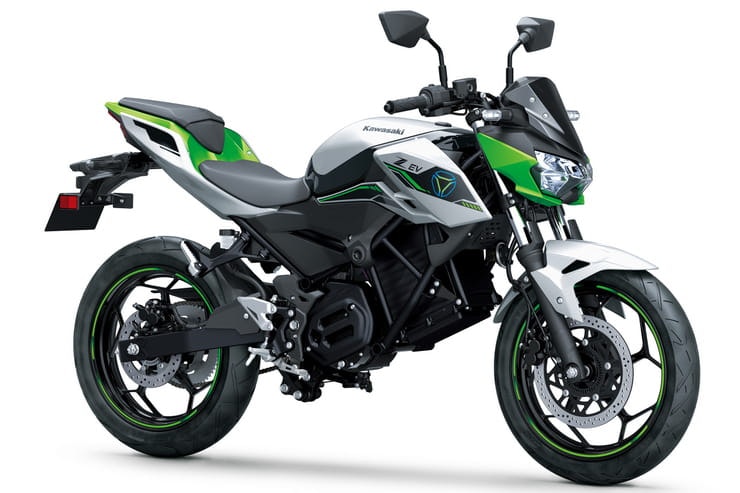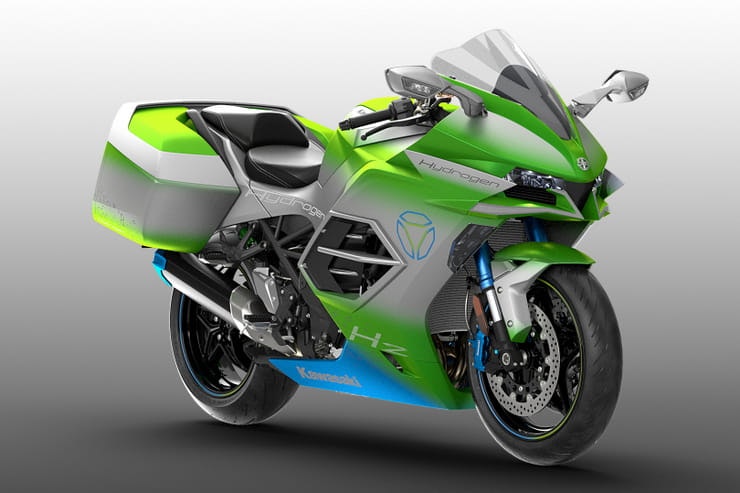Kawasaki reveals electric, hybrid and hydrogen future
By Ben Purvis
Motorcycle Journalist
08.11.2022
A little over a year ago Kawasaki announced plans to electrify its entire range by 2035 and launch 10 electric models by 2025 – and now it can tick off at least three of them having unveiled two all-electric and one hybrid machine at EICMA in Milan.
Having previewed its first electric production bike as a prototype at Intermot a few weeks ago, the EICMA launch expanded the planned range while still keeping the details of the bikes under wraps.
The first two machines to reach dealers will be the as-yet-unnamed all-electric machines that Kawasaki simply refers to as the ‘electric Z family machine’ and ‘electric Ninja’. Both are based on the same underpinnings, with electric motors making 15hp to fit into the learner-legal class, and currently borrow their bodywork directly from the Z400 and Ninja 400. Documents revealed in America earlier this year listed both bikes as 2023 production models under the code names ‘NX011AP’ for the Ninja and ‘NR011AP’ for the Z. The ‘011’ part – sitting in the name where you’d normally find a bike’s engine capacity – refers to their 11kW power rating (15hp).
Electric bikes offer a particular advantage in the learner class, as not only are they easy to ride (unlike Kawasaki’s earlier electric prototype, the production models have a single-speed reduction transmission, so they’re simply twist-and-go) but their power limit is based on ‘continuous’ output, while a petrol bike is rated by its peak power. That means a 15hp, learner-legal electric bike can actually peak at more than that for short periods.
The batteries are packed in a container where you’d normally expect to find the fuel tank and engine, slotting under the dummy tank cover and between the trellis-style frame rails. Behind them sits the electric motor, driving through a reduction ratio to the front sprocket and via a chain to the rear wheel. The steel frame and box-section swingarm, along with the basic forks and brakes, show that the Z and Ninja electric bikes will be at the affordable end of the market, as befits their L-plate power outputs.
Both machines will be on sale in 2023, so it shouldn’t be long before Kawasaki reveals more technical details and prices.
They’ll be followed in 2024 by Kawasaki’s much-hyped hybrid bike. Shown as a near-production prototype at EICMA, this machine features a parallel twin engine – believed to be from the Ninja 400, although Kawasaki hasn’t confirmed this – with a small electric motor. Both drive through an automated manual transmission, with gears shifted from a switch on the bars, and the two powertrains can work independently or together. In other words, it can run as an electric bike, relying on a relatively small battery under the seat, or as a petrol machine, or using both together to maximise performance. As we showed back in 2020, the hybrid has a ‘boost’ button on the right hand bar, by the throttle, to engage maximum power from both drive units.
Finally, Kawasaki has given a glimpse further into the future with its hydrogen-powered, supercharged prototype engine – based on the Ninja H2’s design – and illustrations of the bike that might eventually carry it.
Hydrogen-based combustion engines have minimal emissions; the main output is water vapour, although there are elements of nitrogen oxides. Because the hydrogen – stored in cannisters in the panniers – expands when released, it has to be injected directly into the cylinders after the valves have closed, and supercharging helps add more oxygen to the mix to maximize performance.
There’s no mooted production date for this machine yet, and given the lack of a widespread hydrogen supply network it’s clearly going to be a long time before such a machine is a viable form of transport.
Share on social media:


